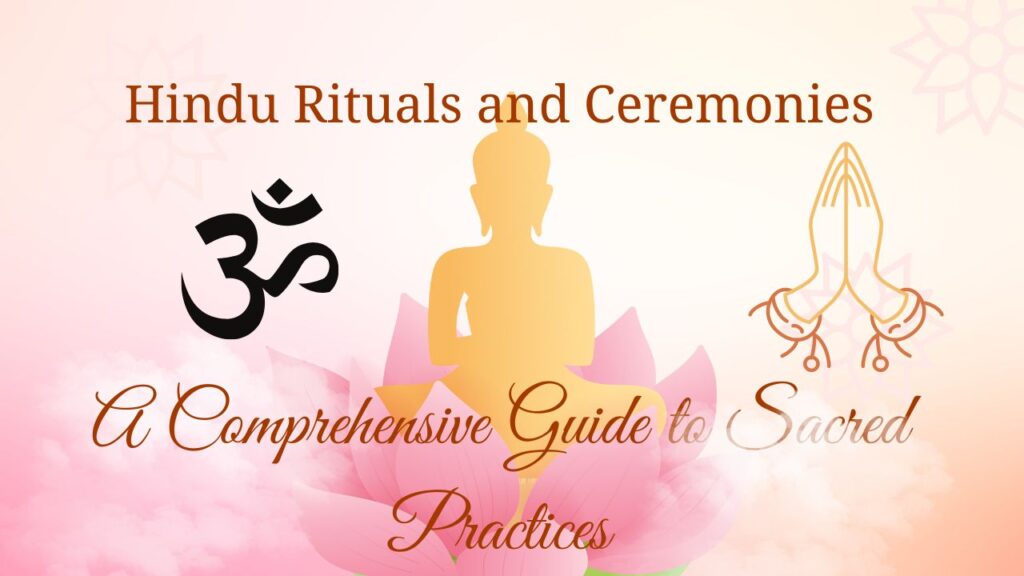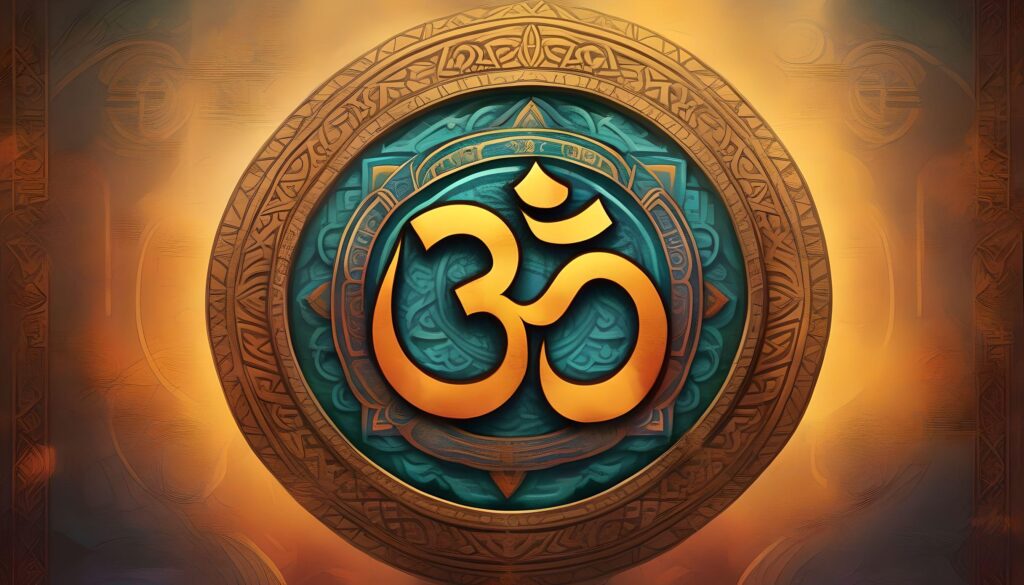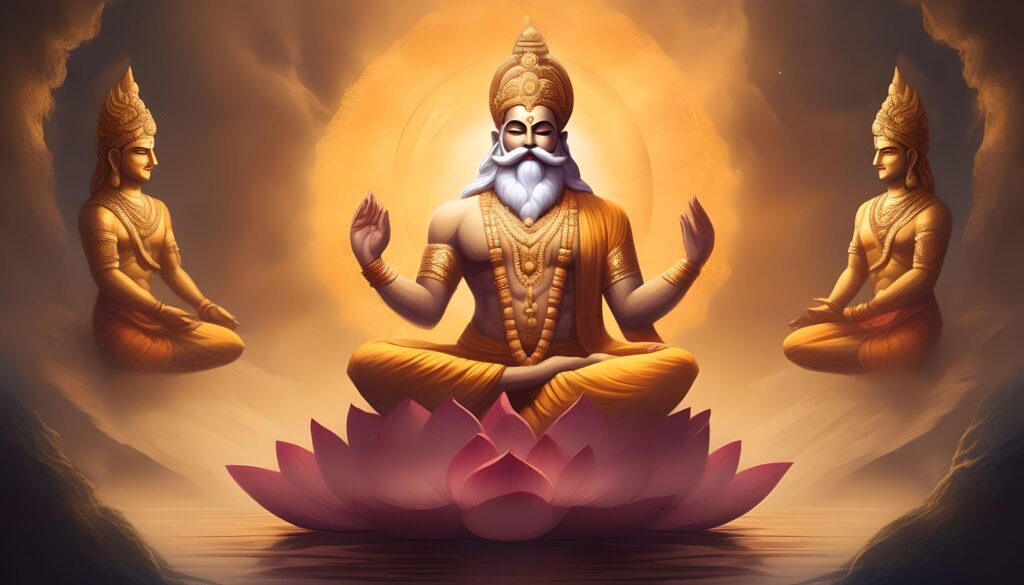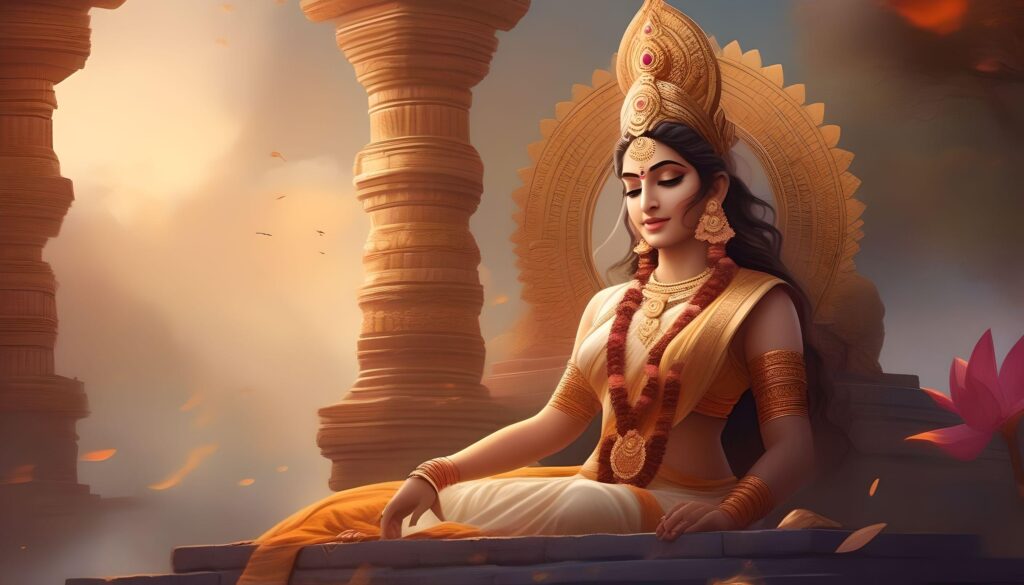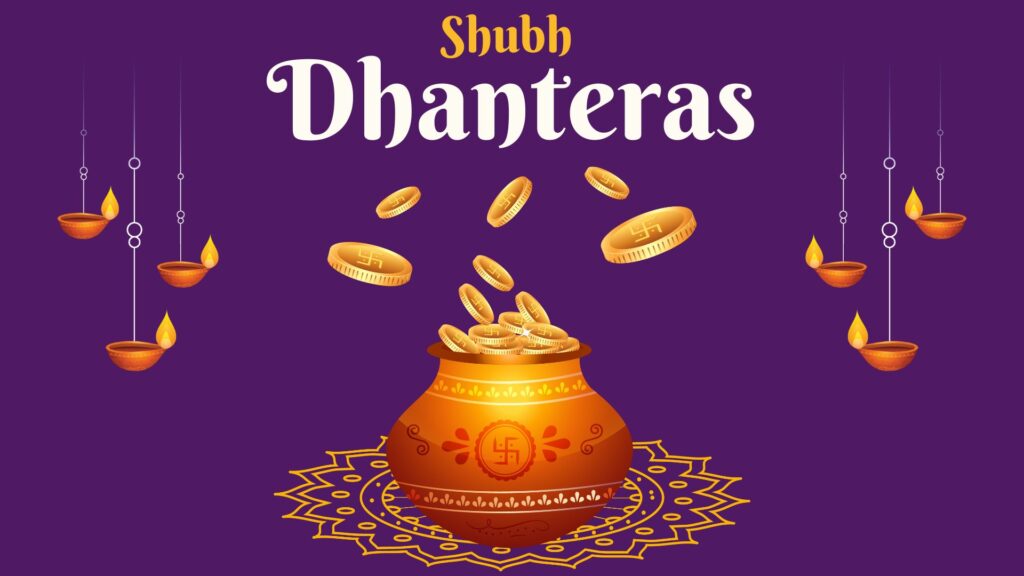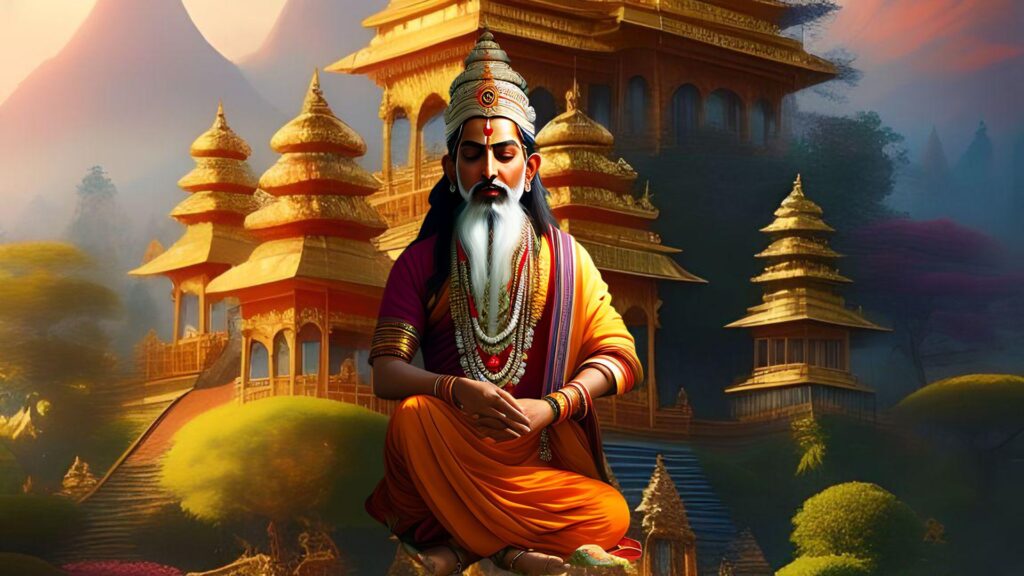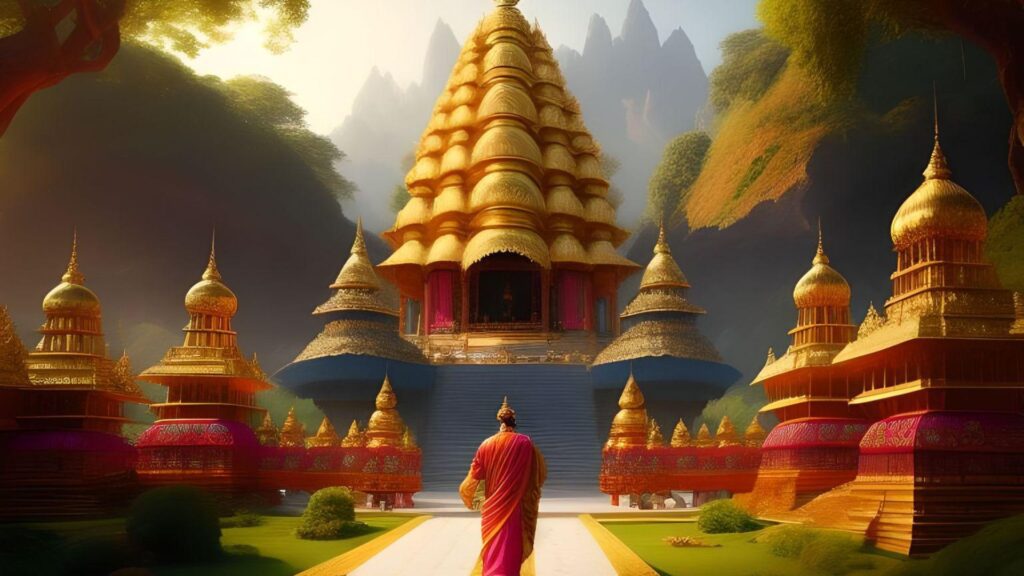Hindu Rituals and Ceremonies: A Comprehensive Guide to Sacred Practices
Hinduism, one of the earliest religions in the world, is replete with ceremonies and rituals that are fundamental to the faith. Rituals and ceremonies are of paramount importance in facilitating a profound sense of devotion and establishing a connection between individuals and the divine. Vedic individuals manifest their devotion and esteem for the celestial beings through an extensive array of rituals, including fire sacrifices (yajna) and worship (puja). This exhaustive guide aims to elucidate the significance and execution of the diverse rituals and ceremonies that comprise Hinduism.
Devotion (Bhakti): The Path of Unconditional Love and Surrender
Bhakti, or devotion, constitutes the fundamental essence of Hindu rituals and ceremonies. It serves as both a path to salvation and a practice. Bhakti entails complete submission and altruistic affection directed towards a selected deity, resulting in a profound spiritual affinity. An individual of any social standing, gender, or life station is capable of developing a devotion to their preferred deity. Hindus endeavor to foster a profound connection with the divine and attain the state of blissful union by means of devotion.
Diverse rituals are carried out as part of the bhakti practice in order to venerate and worship the deities. By participating in these rituals, devotees are able to manifest their affection, appreciation, and esteem. An example of such a practice is worship, which is also referred to as puja.
Worship (Puja): An Expression of Reverence and Gratitude
Puja, or worship, constitutes a fundamental tenet of Hinduism. It comprises an extensive array of ceremonial practices conducted in reverence of and to establish a rapport with the divine. Hindus partake in puja, whether in temples or their residences, with the intention of soliciting blessings, expressing gratitude, and forging a direct connection with the deities.
Worship consists of the presentation of offerings and the reception of blessings. Pujas differ in scope and nature in accordance with considerations such as the deity, the occasion, and individual inclination. Routines at home are frequently integrated into everyday occurrences and executed in the absence of a priest’s supervision. Conversely, temple worship encompasses more ornate rituals, frequently under the guidance of a temple priest.
Devotees participate in a multitude of rituals and exercises during puja, including darsana (visualizing the deity), mantra chanting, instrument playing, bell clanging, incense burning, and offering. Typical offerings consist of nourishment, recently harvested blossoms, and illumination derived from wicks saturated with ghee, referred to as “arti.” An additional token of divine grace bestowed upon the worshipper is prasada, which signifies a fortunate offering.
Fire Sacrifice: Connecting with the Sacred through Rituals
Fire sacrifices, referred to as yajna or homa, occupy a prominent position in Hindu rituals and places of worship. Symbolic substances such as ghee, grains, and incense are deposited into a sacred fire receptacle during these rituals. Frequently, the presence of a priest is necessary for the fire sacrifice to be conducted.
In numerous spiritual traditions, fire is revered and functions as a conduit between mortals and their deities. Homas and yajna are Vedic rituals of antiquity that remain in practice at present. It is believed that their ability to purify and sanctify the atmosphere promotes an environment of serenity. Numerous Hindu ceremonies rely heavily on fire rituals, which facilitate connections with the divine and the pursuit of blessings.
Mantra: The Power of Sacred Chants and Incantations
Mantras are of considerable importance in Hindu ceremonies and rituals. Sacred words, phrases, or sentences are frequently recited or murmured in the course of rituals. It is believed that mantras, which are typically composed in Sanskrit, have performative and transformative power.
A diverse array of mantras exists, each possessing an exceptional purpose and significance. They may be expressed mentally, gently, or aloud. The act of reciting mantras facilitates mental concentration, the activation of divine forces, and the formation of a spiritual bond. Additionally, mantras function to designate the particular lineage of Hinduism that an adherent adheres to.
Grace (Prasada): The Blessed Offering of the Divine
Prasada, or grace, denotes the sacred offering that adherents of the faith receive as part of ceremonial practices. The prasada is regarded as a sacrosanct offering from the deity and is believed to be infused with divine blessings. It represents the reciprocal exchange of affection between the devotee and the divine, as well as divine grace.
Following its offering to the deity, who bestows his blessings, the prasada is distributed to the devotees. Fruits, fresh flowers, coconuts, chocolates, and milk products are typical prasada offerings. Devotees attain divine blessings and establish a profound spiritual bond with the deity through the receipt and ingestion of the prasada.
Service (Seva): Reverential Care and Assistance
Service, referred to as seva, entails bestowing reverent assistance and care upon an individual or entity in recognition of the divine. It may be directed at the community as a whole, enshrined deities, gurus, parents, visitors, or animals. The particulars of seva differ according to the entity that is being attended to.
Gauseva, for instance, denotes the ceremonial treatment of cows, which is regarded as exceedingly fortuitous. In a similar vein, devotees of a particular deity may partake in temple service by carrying out ceremonial duties including bathing the icon, altering ornaments, ringing chimes, and presenting light via arti. Frequently, ritual masters who serve frequently at the temple or shrine perform Seva.
Astrology (Jyotisa): Seeking Guidance from the Stars
Jyotisa, an aspect of astrology, is profoundly incorporated into Hindu rituals and ceremonies. In the realm of astrology and astronomy, jyotisisi, an esteemed astrologer, are frequently enlisted to ascertain favorable dates and times pertaining to the installation of images, marriages, and pilgrimages. Additionally, the naming of offspring and the selection of life partners are both influenced by astrology.
Through the study of celestial bodies and their positions, astrology provides insights into the cosmic influences on human life. It helps individuals make informed decisions, align their actions with celestial energies, and seek favorable outcomes in various aspects of life.
Life Cycle Rites (Samskara): Marking Milestones and Transitions
Life cycle rites, known as samskara, mark important stages and transitions in an individual’s life. From conception to cremation, these rites play a significant role in shaping personal and societal identities. While Hindu texts prescribe certain ceremonies for specific stages of life, the actual practices of samskara vary among families and regions.
Some of the significant life cycle rites include:
- Garbhadhana: A rite related to conception, performed after menstruation and before or after sexual intercourse.
- Pumsavana: A ritual during pregnancy to ensure the birth of a male child.
- Simantonnayana: A rite performed near the end of pregnancy to facilitate safe delivery.
- Jatakarman: A celebration of the birth of the child, observed by parents and close friends.
- Namakarana: A rite that commemorates the naming of the child, often performed at the community temple.
- Niṣkramana: A rite marking the child’s first outing into the public, usually when they are three to four months old.
- Annaprasana: A celebration of the child’s first time eating solid foods, typically around five to six months of age.
- Cudakarman: A rite that marks the child’s first haircut, usually between one to three years old.
- Karnavedha: A rite involving the piercing of the child’s ears, often performed when they are young.
- Vidyarambha: A rite marking the beginning of the child’s education, usually at the age of five.
- Upanayana: The sacred thread ceremony, symbolizing the child’s transition into student life.
- Vedarambha: A rite commemorating the child’s study of religious texts, especially the Vedas and Upaniṣads.
- Kesanta: A rite for males marking the first shaving of the beard, symbolizing the journey towards manhood.
- Samayartana: A rite marking the completion of the student phase and preparation for the next stage of life.
- Vivaha: The marriage ceremony, signifying the entry into the householder stage of life.
- Vanaprastha: A stage of life where individuals transition into a more contemplative and spiritual focus.
- Antyesti: Funerary rites performed within the first thirteen days following death.
These life cycle rites are varied and diverse, reflecting the unique traditions and customs of different families and communities.
Pilgrimage (Tīrthayatra): Embarking on Sacred Journeys
Tirthayatra, or pilgrimage, is a prevalent religious practice within the Hindu faith. It entails undertaking expeditions to venerated locations, including mountains, sanctuaries, shrines, and rivers. Pilgrimage sites are revered for their profound religious importance and are thought to be infused with celestial forces.
Hindus engage in pilgrimages for a multitude of motives, such as the fulfillment of vows, the pursuit of spiritual development, and membership in a community of devotees who share similar beliefs. Sacred locations, including Varaḇasi, Ayodhya, Mathura, and Haridvar, draw millions of pilgrims annually, offering them prospects for profound spiritual encounters.
Pilgrimage rituals frequently encompass acts of worship, the reception of prasāda, and additional observances overseen by clerics. Devotees can invoke the divine, establish a connection with the celestial, and behold blessings for themselves and their cherished ones through pilgrimage.
Yoga: The Path to Spiritual Transformation
Yoga, a fundamental component of Hinduism, comprises an extensive array of spiritual disciplines. The term ‘yoga’ encompasses a range of methods and techniques that are designed to foster spiritual development and effect personal transformation. It entails the manipulation of the respiration, body, and senses in order to achieve elevated states of awareness.
Meditation is an essential component of yogic practices, facilitating the attainment of inner tranquility and mental lucidity. Haha yoga, among others, places emphasis on the execution of physical postures (asana), the practice of breathing techniques (pranayama), and the act of visualizing. The integration of the body, mind, and spirit is the ultimate goal of yoga, which results in enlightenment and freedom (mokṣa).
Numerous practitioners have embraced yoga in recent years due to its reputation for promoting both physical and mental health. Nevertheless, the profound interior transformation it has the capacity to facilitate is underscored by its Hinduistic origins, which augment its spiritual significance.
Conclusion
Hindu rituals and ceremonies are of profound importance to millions of devotees. These practices facilitate the manifestation of devotion, the solicitation of blessings, and the formation of a direct rapport with the sacred. Every ritual, ranging from fire sacrifices and worship to the recitation of mantras and the performance of pilgrimages, presents a distinct prospect for individuals to develop spiritually and undergo personal change.
By participating in these ceremonial and ritualistic practices, Hindus nurture a profound sense of veneration and appreciation, thereby nurturing a profound connection with the celestial beings and the metaphysical aspects of existence. These practices, whether executed in temples or homes, function as a symbolic representation of the eternal and transcendent essence of Hinduism. They provide guidance to individuals as they navigate the spiritual path towards self-realization and liberation.
Embracing the profundity of their religious customs, devotees derive comfort, motivation, and a feeling of inclusion via the opulence of Hindu rituals and ceremonies.

